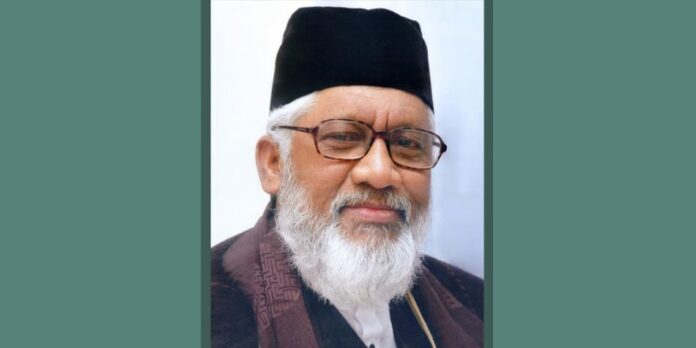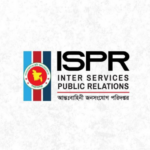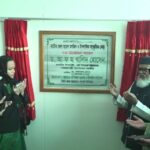Alhaj Sufi Mohammad Mizanur Rahman »
Chittagong is the spiritual home of many saints. Since many saints have been established here, it has been able to earn the right to be placed on the same level in the pages of history as various holy places of the world. In order to keep this glory of Chittagong intact and unfading, the Most Merciful Allah Ta'ala has, as His special mercy, brought forth such a great saint of the age, in the Syed Para Munsef family of Nanupur village in Fatikchhari upazila of Chittagong. He is Qutub-e-Azam Gauche Mukarram Hazrat Maulana Shah Sufi Syed Abduchalam Ichapuri (RA) and who is my Pir-Morshad. I first appeared in his service in 1965. However, I had previously dreamed of a mysterious old man in white clothes. I was searching for him in my heart. Once, a friend of mine, Shah Abdur Rahman (Rahmatullah Alaihi), told me, "I will take you to a venerable saint near Maizbhandar Sharif." Then, in 1965, I had the good fortune to appear before Baba Jan Abduchalam Ichapuri (Rahmatullah Alaihi) for the first time. I entered his court, offered my salutations and bowed down to him. However, as soon as I saw him, I saw him in the same state as I had seen an venerable saint in my dream, dressed in the same attire, white beard, and turban, and I decided in my heart that this was the venerable saint I had seen in my dream. After remaining silent for some time, Huzoor Qibla said, "Baba! I have received a special favor from the court that you will come to my court. You will serve my court." Since then, I have been coming and going to the court of the Huzoor. I used to work in a bank. I started my first job with a salary of 100 taka. I used to go to Huzoor's court on weekends. There was a car rental when I went. Sometimes there was no car rental when I came. But I didn't tell Huzoor. However, Huzoor would pay for the car rental and breakfast expenses himself. I used to go and come like this, so much so that I wouldn't go anywhere else except to Huzoor's court.
After the war, there was famine in the country. At that time, I was still employed in a bank. One day, I went to Huzoor's court, and after much discussion, Huzoor said, "Father cannot do business." I said, "Huzoor! I can, but I don't have the money." Then Huzoor firmly said, "Allah will provide the money." With the blessings of his words, I started a business. Since then, with Huzoor's prayers and mercy, Allah Almighty has brought me to this position. Today, I have become the owner of a mill and factory, and thousands of people have been provided with livelihood. All this is the fruit of the prayers and mercy of my beloved Morshed Baba Jan Kutbe Azam Gaoch Mukarram Hazrat Maulana Shah Sufi Syed Abduchalam Ichapuri (R.A.). He has arranged my life. I think that my body is the balance, and Baba Ichapuri resides inside me.
Babajan Ichapuri (Rahmatullahi Alaihi) was a Kamele Mokammel Ali. The one who creates Ali through Nazar Karam and Tawazzhuh is Mokammel Ali. The greatness of Babajan Ichapuri (Rahmatullahi Alaihi) is so high that what we say or write cannot be completed. Whatever we say or write will be like throwing stones into the ocean. Still, today, on the occasion of his birth anniversary, Urs Sharif, I have tried to present some descriptions of his lifestyle with my limited knowledge.
Firstly: He is the well-wisher and blessed successor of the great Ghausul Azam Hazrat Maulana Shah Sufi Syed Ahmadullah Maizbhandari (a.), the exponent of the Maizbhandari Sharafat, and one of the main caliphs of the great Ghausul Azam Hazrat Maulana Shah Sufi Syed Gholamur Rahman Babajan Qibla Maizbhandari (a.). His father Syed Siddiq Ahmad Sarestadar Sahib was a renowned person. His grandfather Hazrat Maulana Shah Sufi Syed Amin Uddin Monsef Sahib was a Hamzamati of the great Ghausul Azam Hazrat Qibla (a.).
Hazrat Maulana Ichapuri (R.A.)'s ancestors were descendants of Syed Hamiduddin Gauri, who came from Gaur Nagar, who had migrated from Baghdad to Gaur Nagar to spread religion and settled in Chittagong over time. This great saint was born in the lineage of one of their sons, Syed Muhammad Chana.
Gauche Mukarram Hazrat Maulana Shah Sufi Syed Abduchalam Ishapuri (R.A.) was in the womb of his mother, Syeda Jamila Khatun, who had received a dream about this great saint. One day, like any other day, Bibi Syeda Jamila Khatun, after completing the Isha prayers, recitation, tasbeeh-tahlil, Darood Sharif, etc., fell asleep. At that time, she saw Hazrat Gausul Azam Shah Jilani (R.A.) in her dream. He took Hazrat Baro Pir Sahib in his arms and Hazrat Baro Pir Sahib addressed Jamila Khatun as 'Mother'. After waking up, Jamila Khatun narrated the story of her dream to her mother, the Companions. Knowing the details of the dream, Jamila Khatun's revered mother told her Pir Morshed, the late Hazrat Maulana Maizuddin (RA) about her daughter's dream. Hazrat Maulana Maizuddin (RA) went to interpret the dream and said, 'Your daughter is very lucky. She will have a son whose knowledge will shine all around. He will also gain unparalleled fame in the spiritual world. Taking Hazrat Baro Pir Sahib in her lap means that Jamila Khatun will have the fortune of becoming the mother of a saint with the same status as Baro Pir Sahib.' Finally, on the appointed day, this great man brought the Tashrif to Dharapur on 27th Paush 1286 Bengali, 10th January 1880 AD, corresponding to 21st Jamadi-us-Sani 1297 AH.
The childhood of Hazrat Ishapuri (RA) is a mirror of his later great life. Therefore, we would like to make an attempt to discuss his childhood at length. The maternal grandmother of the boy Ishapuri (RA) was very religious. She was so devoted to the Holy Prophet (PBUH) that in her free time, she would always narrate many miraculous stories of the Holy Prophet (PBUH) to the boy Ishapuri (RA). Hearing all these miraculous stories from his grandmother, the heart of the boy Ishapuri (RA) became attached to the Prophet. He gradually began to feel the pain of the Prophet's love. He often did not stop asking his respected grandmother how it was possible to see the Holy Prophet (PBUH) in dreams. His grandmother ordered him to recite Durood Shareef in large quantities. The boy started reciting Darood Sharif countless times every day before going to bed. He often fell asleep while reciting Darood Sharif. After a few nights passed in this way, one blessed night, Hazrat Rasulullah (PBUH) appeared to his future deputy, Balak Ishapuri (RA). He lovingly placed his blessed hands on the boy's head and face. When the Holy Prophet (PBUH) touched the boy Ishapuri with his blessed hands, he felt such a wonderful fragrance, which he did not find anywhere else in his later life except in the Huzura Sharif of his great guide, Ghawthul Azam Hazrat Babajan Qibla (A.S.) and the Rawza Sharif of Ghawthul Azam Dada Hazrat Sahib Qibla (RAH).
The boy's undying love for the Holy Prophet (peace and blessings of Allah be upon him) did not end here. Rather, it took root even more firmly in the boy's tender heart. He often began to feel this fragrance. Sometimes he would say, "The Holy Prophet (peace and blessings of Allah be upon him) has come. I can smell the fragrance." Saying this, he would shout. Seeing this unusual condition of the boy, his mother, Sahibani, became very worried. She requested her husband to ask a scholar about the boy's mental condition and arrange for his immediate remedy. On the advice of his wife, the father, Siddiq Ahmad Sahib, went to the Imam of their mosque, the late Maulvi Hamidullah Sahib, one Friday with his son. After telling the Imam about the boy's dream and his mental state, the Imam asked the boy a few questions and commented that the boy had indeed seen the Holy Prophet (peace and blessings of Allah be upon him) in his dream. He also said that the boy's dream was very blessed. He should be taught the religion of Islam. Hamidullah Sahib emphasized this to Syed Sahib.
A characteristic feature emerges from the above sequence of events, which is love for the Prophet. The stronger the love for the Prophet, the closer the heir or successor to the Prophet in terms of relationship. This heir is not of movable/immovable property but of the guardianship. After the door of prophethood was closed, the guardianship was designated as the vehicle of guidance. And the responsibility of managing the guardianship was entrusted to the Aliullahs.
It is worth mentioning that all the children of the late Aminuddin Monsef Sahib were very much inclined towards English education. Therefore, when the father of the boy Ichapuri (R.A.), the late Syed Siddique Ahmed Serestadar Sahib, also had a natural desire to teach his son English, his mother Jamila Khatun opposed it. He reminded him of the prophecies of Pir Maizuddin (R.A.) and Imam Hamidullah Sahib and requested to arrange for his son to be educated in a madrasa. But the late Syed Siddique Ahmed Serestadar Sahib thought about his son's future with a worldly perspective. Thinking that if the son studied in a madrasa, he would face financial crisis in the future, he did not agree to teach his son in a madrasa. So, after completing his son's primary education in the village school, he decided to take him to his workplace, Hathazari, with the intention of giving him a scholarship exam and enrolling him in a school there. It was the wish of the Serestadar Sahib that if the student passed the scholarship exam, the path to further education would be smooth. After being admitted to the Hathazari school, the boy started studying diligently.
The next incident was, once his mother sent the boy Ishapuri with some sweets to Hazrat Ahmadullah Maizbhandari (a.s.). Hazrat Qibla looked at his face and said, “You are the face of Hachan, are you my nurse?” No one could explain the secret of this word to him. Later, Hazrat Sahib Qibla explained to him in a dream that in the future he would be engaged in the service of Hazrat Hachan ibn Thabit (a.s.), a companion of Hazrat Rasulullah (s.a.w.a.), with the special features of Hazrat Rasulullah (s.a.w.a.).
It is worth mentioning that in that year he was preparing to take the scholarship examination and one day his father took him to Hazrat Babajan Qibla Gholamur Rahman Maizbhandari (a.s.) to seek blessings. Then Babajan Qibla (a.s.) said, Maulana Saheb will not take the scholarship examination. That is, he predicted that in the course of time he would become a world-famous Maulana and the bearer of his tariqa; what would be the benefit of him taking the school scholarship examination? Later, he was forced to leave school as a result of the benevolence of Gausul Azam Hazrat Maulana Syed Gholamur Rahman Babajan Qibla Maizbhandari (a.s.). Then he got admitted to a local madrasa. In a short time, he memorized many books in Arabic, Persian and Urdu. The contribution of the local prominent scholar Maulana Syed Abdul Latifi Saheb in this is undeniable. Later, he joined Mohsenia Madrasa in Chittagong city for higher education. He studied Quran Majeed, Hadith Sharif and various books on Fiqh under the then famous scholars Maulana Kamal Uddin, Maulana Abdul Majeed and Fakhre Bangla Maulana Abdul Hameed (RA). Later, he joined Calcutta Alia Madrasa, a famous religious educational institution of that time, in the hope of getting a higher degree. He secured first place in the first division in the Jamaat-e-Ula examination at Calcutta Alia Madrasa. Later, he obtained a higher degree in Fiqh from Calcutta Ramjania Alia Madrasa and received the title of 'Mufti-e-Azam'. In his working life, he was first appointed as a Mudarris of Hooghly Mohsenia Madrasa. At that time, Mr. Taylor, a European, was the Assistant Director of the Education Department. He visited the Hooghly Madrasa and after seeing the Arabic, Persian, Urdu and English skills of Maulana Isapuri (RA) appointed him as a professor of the Arabic and Persian department of the Government Hooghly Islamia Intermediate College. But he could not stay in the job for long. He used to see his beloved Pir Murshid Hazrat Babajan Qibla (AS) in his dreams almost every night. He used to call him by touching his hand. So he returned home and came to the presence of Ghausul Azam Hazrat Babajan Qibla (AS). One day, after Hazrat Babajan Qibla (AS) spoke many mysterious words, he ordered him to study the 'Fathul Ghayb' of Bara Pir Abdul Qadir Jilani, 'Masnavi' of Maulana Rumi, 'Fususul Hikam' of Shaykhul Akbar Muhiuddin Ibn Arabi and his Tafsir books. When Maulana Isapuri (Rahmatullah Alaihi) finished studying all these books and appeared in the court of Hazrat Babajan Qibla (A.S.), he said, 'Our Fathul Ghayb Ghayb Mein Hai'. This statement of Hazrat Babajan Qibla (A.S.) is very mysterious. The meaning of this statement may also be that the books you have read on Sufism are the gateway to the world of Sufism. And what I will give you is the knowledge of the unseen world of Allah Ta'ala. The above blessed words of Hazrat Babajan Qibla Maizbhandari (A.S.) point in that direction. In this way, the venerable Hazrat Maulana Syed Abduchalam Isapuri (Rahmatullah Alaihi) acquired Ilm-e-Zahir and Ilm-e-Batin. This great saint, who lived for one hundred and four years, wrote about one hundred and four books on Sharia, Tariqa and Sufism, and enlightened the world with the light of his knowledge. It is also worth mentioning that he held about 104 Munajiras against the false believers and preached the truth. Finally, leaving countless devotees in a sea of sadness, he left this world on 11 Chaitra 1390 Bengali, 25 March 1984 AD, 21 Jamadius Sani 1404 AH, responding to the call of Allah Almighty. (Inna lillahi wa inna ilahi rajeun)
Today, on the great 11th Chaitra 1430 Bangabhab, his holy annual Urs Sharif is going to be held on 25 March 2024 AD. Many devotees and followers will gather from local and remote areas of Bangladesh. In particular, the 18th descendant of the great Pir Syed Abdul Qader Jilani (Rahmatullah Alaihi) Hazrat Shaykh Syed Afif Uddin Al-Mansur Al Jilani Mu.Z.A. will be present as the chief guest. Many other scholars and elders will be present and will give an informative discussion on the life and career of the great saint Hazrat Maulana Shah Sufi Syed Abduchalam Ichapuri (Rahmatullah Alaihi).









